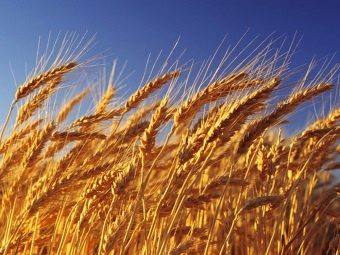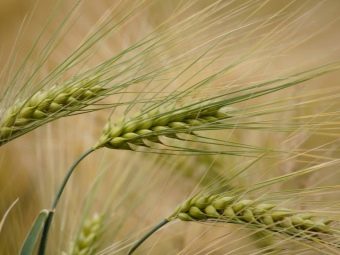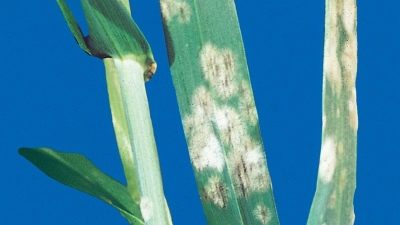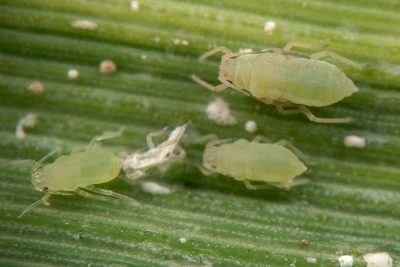Diseases, varieties and technology of growing barley
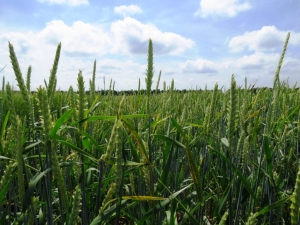
Such a cereal culture as barley has long been studied and cultivated by man.Today spring barley is an important food, technical and feed raw material. From it, the well-known pearl barley and barley flour are produced. In addition, it is used as a concentrated feed for animals.
What it is?
Spring barley has long been recognized as the main food and technical component. Its grains are the basis for the manufacture of flour, barley and barley flour, coffee substitute. Pure barley flour is not suitable for baking bread, so wheat and rye flour (15–20%) is added to it. Barley grain is a truly valuable raw material. It contains protein (10%), carbohydrates (60%), fats (3%), fiber (6%) and ash (2.7%).
The protein in the plant is rich in amino acids - lysine and tryptophan. Cereals are widely used for the composition of concentrated types of feed (1 kg contains 100 g of valuable protein) for livestock, especially pigs. Part of the core contains a high level of beneficial substance called hordein. Once in the body of animals, it inhibits the development of gram-positive types of bacteria. This feature improves the condition of domestic cattle. In addition to agriculture, the brewing industry was not without barley. As a component for beer malt, two-row barley with a content of plastid starch rich in amylose and amylopectin has shown itself well.
Unlike rye and wheat, barley straw is the most nutritious. Steamed cereal is great for animal nutrition. Agronomists in the south of Russia prefer to grow this plant for green fodder and mixed hay, where peas, vetch, plant and other crops are added. For their biological characteristics, spring barley is recognized as a good component among crops in the category of field crop rotation. For its cultivation, less moisture is expended, the growing season has a short period of maturation, earlier. In addition, the use of technology is appropriate in the care and harvesting of crops, which reduces the cost of field work. This cereal plant is used as an insurance crop for planting winter crops.
Barley is a representative of cereals. The full growth of cereal is influenced by various factors - climate, weather conditions, care, fertilizers and others. Agronomists have identified such phases of culture development and growth as:
- germination of the weevil;
- seedlings;
- tillering;
- exit in a tube;
- earing;
- bloom;
- the formation and maturation of the seed.
Varieties and their characteristics
Barley culture is of the following types:
- multi-row (ordinary);
- double row;
- intermediate
Most areas in Russia are engaged in the cultivation of ordinary and double-rowed. Frequently encountered varieties are Prairie and Sir. They possess high fertility and good quality. Depending on the climatic conditions in agriculture, more than 80 varieties of barley are known. It is worth noting the most famous.
- "Vakula" possesses good resistance to territorial and climatic changes. The grain weight is 0.050 g, and a sufficient amount of moisture contributes to its increase to 0.062 g. Filming is weak, the protein content is low. Yield can reduce the thickening of crops. Fees from 1 ha - about 9 tons.
- Helios. Abundant and frequent irrigation increases yields. The growing season lasts 92 days. Grain weighs about 0.049 g. With 1 hectare of land you can collect 8 tons of grain.
- "Prairie". Maturation - 68–90 days. The weight of the grain reaches 0.045 g. The composition contains 58% starch, 15% crude protein. Average hectare fees per hectare are only 6.1 tons.
- "Duncan" has an average grain size, strong stalks, characterized by resistance to overruns and runs. The harvest is 8 tons of culture from 1 ha.
- "Leon" matures in 85 days, not afraid of hot, dry weather. Protein and lysine are presented in large quantities. The yield is affected by weather and climate - from 1 to 4 tons per hectare.
Planting dates
Barley is an agricultural cereal crop that does not respond to temperature fluctuations. Planted materials begin to take root in the ground, even at low rates on the thermometer (from +1 to +3 degrees), since the planting culture is by its nature winter. Sowing seeds usually occurs in early spring. By this time, the soil will be saturated with necessary substances and prepare for mechanized treatments. Planting is required in the interval from 6 to 8 days - immediately after the soil is ready for planting. Such an early planting period ensures high rates of harvest. In addition, early sowing suspends the effect of the generative function of the growth of neighboring plants, thereby ensuring a dense and better growth of the stems and productive barley grains.
Experts do not recommend choosing late sowing dates. Excessive amount of moisture by this point will negatively affect the grain yield. During this period, the plant root system usually develops poorly, and unfavorable weather falls directly on the formation of individual spikelets. Late sowing increases the chances of becoming infected with diseases and attacking pests.
Delays in sowing by 7 or more days reduce yields by 700–800 kg per hectare of land, and in the dry season, by 1100–1200 kg. On the basis of these data, agronomist scientists have identified a scheme: a delay of 1 day = a drop in yield by 0.8 centners (1.6 during the drought period) from 1 ha.
Cultivation technology
Spring barley is the fastest ripening plastic material. This crop can adapt to all climatic conditions, which allows it to be cultivated almost everywhere. On the territory of Russia, industrial companies of the Urals, the North Caucasus, Siberia, the Central Black Earth region and the Non-Chernozem zone are engaged in growing cereals. Spring barley is a plant of a long day. Heading rate depends on the duration of the light exposure. It belongs to the early ripening plants, since the ripening period lasts from 60 to 100 days. This plant is a typical self-pollinator.
When growing crops There is no need to strictly observe the temperature regimes. Barley seeds germinate easily even at +3 degrees. For this reason, you can start landing much earlier. True, such conditions cause the so-called contraction of germination. The first shoots can be observed at a temperature of +5 degrees.
The optimum temperature for successful germination is +20 degrees. At the same time, young shoots are resistant to small frosts. With the onset of the late phase of development, winter hardiness decreases. When the grains begin to bloom and pour, frost can damage them. Frost grains grow poorly in such conditions, so they are not suitable for brewing beer.
Proved that barley culture is the most drought tolerant. During a short growing season, the plant correctly uses and saves the earth’s moisture reserves. Thus, before the arrival of dry days, the grain is poured in full. This feature allows you to achieve large-scale and sustained harvest in the southern regions of the Russian Federation. It overtakes in this respect wheat and oat crops.
It is recommended to grow cereals only in fertile lands. The plant slowly absorbs additional mineral supplements, and the root system poorly assimilates useful substances, therefore, when choosing a soil for planting, it is necessary to pay attention to its fertility.
You should not choose acidic soil - poor survival rate is noticeable. Symptoms: the appearance of delays in development, foliar system is covered with yellow. All this is due to impaired metabolic processes. Soils with high fertility and an acid index of 6.7–7.5 will be suitable for growing barley. Seeds suffer from excessive moisture, so you should avoid wetlands.The worst choice would be sandy and alkaline soil.
The main nutrients of this grain crop are absorbed rather quickly. Over the entire period of development, the grain absorbs about 60% of potassium, 45% of phosphorus and a small amount of nitrogen. With the approach of flowering the absorption of organic matter decreases. To get high fees, the plant must be provided with abundant nutrition throughout maturation. After the end of growth it is impossible to fill the lack of nutrients.
In the autumn season, it is recommended to apply fertilizers based on phosphorus and potassium before plowing. In the spring used nitrogen and sheet feed.
Diseases and pests
Grain crops are susceptible to infection of field diseases and attacks by harmful insects. It is worth considering the common problems that workers face when growing barley.
- Dust smut. Defeat occurs during the period when the formation and maturation of ears begins. Spores of fungi spread to spikelets, covering them with brown growth. This disease can destroy young crops and harm future plants, spreading through the air. For the fight used special drugs. Resistant to dusty smut are varieties "Testament" and "Firstborn".
- Stem rust. Leaves and stems are rusty. The lesion spreads throughout the site and fills it completely. Infected barley loses quality and abstinence from moisture. Fungal disease appears due to excessive amounts of water.
- Mealy dew widespread in regions with high humidity. Spider web fully covers leaf and stem systems. Over time, its structure is compacted. Fungal dust infects neighboring spikes.
- Brown rust. This disease is inherent in the Siberian climate. On the leaves appear spots of yellow and drilling color, turning into a set of black dots. Harm brings only growing stems, the development of the grain does not affect.
There are several dangerous insect pests.
- Granary weevil affects grain composition in storage conditions. Thus, the temperature of the room should not exceed +25 degrees, and the humidity indicator - no more than 13%. Compliance with the conditions will protect stocks of barley from the attack of this insect.
- Grass aphid dangerous to barley and neighboring cereals. The creature settles in the core of the spikelet and absorbs its juices. The aphid activity season is in summer. Such damage can be avoided by early planting of seeds. Do not forget about cleansing and fertilizer.
Storage
The main storage method for harvested barley is bulk in granaries. For this, its entire area is used. To do this, the cleaned grain is scattered around the perimeter of the same layer. The height of the mound depends on the humidity in the room. So, at 14% - the height reaches 5 meters, 18–25% - 1 meter (in summer) and 3 m (in winter). A culture that has not gone through post-harvest ripening is stored in a 1.5-meter embankment. After the process is completed, the height can be increased to the maximum allowed.
The technology of growing spring barley is given in the following video.





